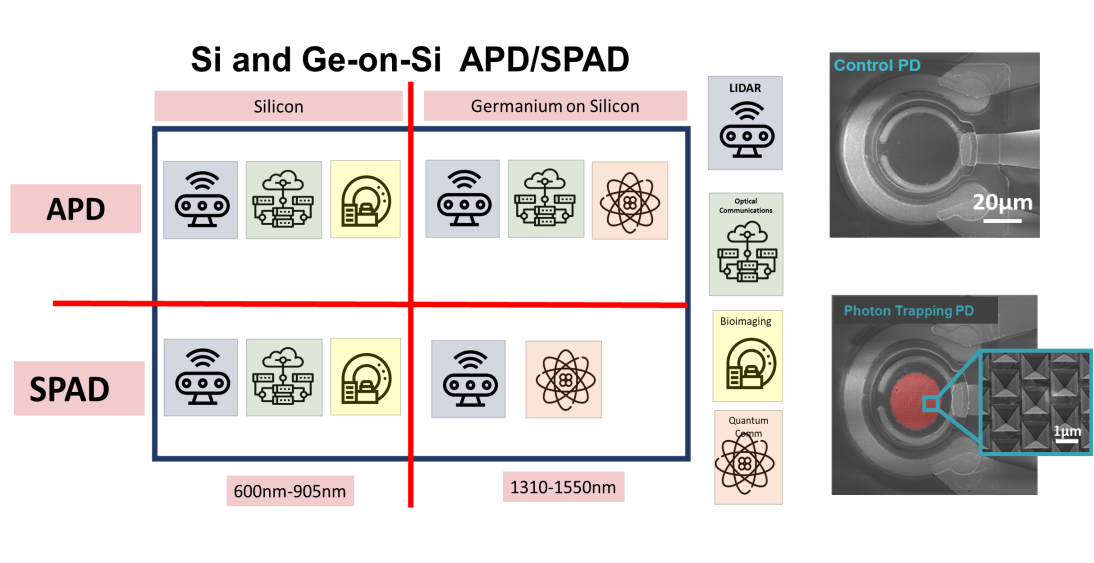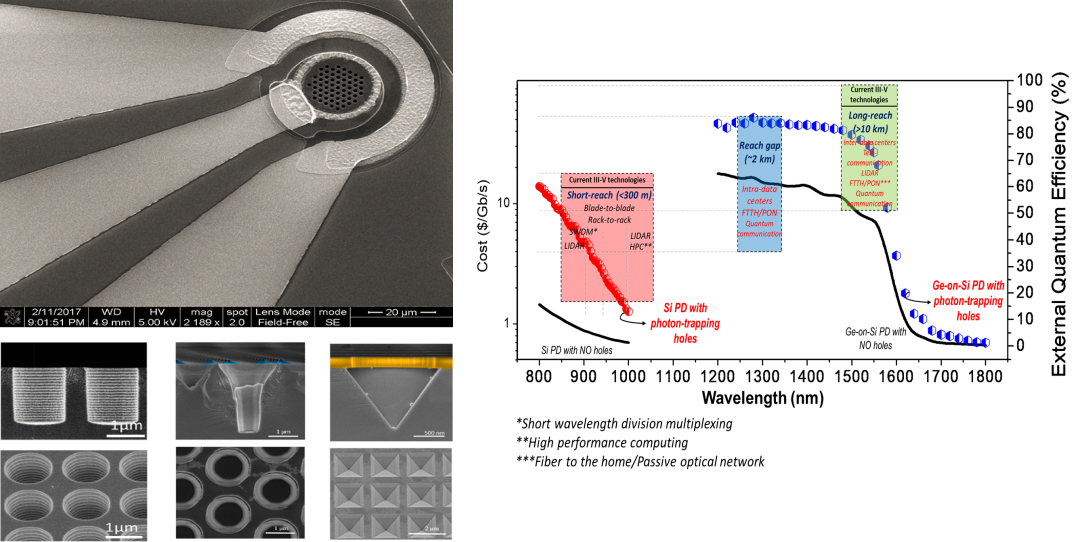Ultrafast avalanche photodetectors for imaging and ranging
Improving the time resolution and sensitivity of Avalanche Photodetectors (APDs-SPADs) is critical for increasing the resolution of Time-of-Flight imaging systems, optical communications, and fluorescence-based biosensors. My research is focused in enhancing the bandwidth, gain and detection efficiency of such detectors by controlling the depth of light absorption, delivering the light in critical regions of the semiconductor. This can be achieved by the implementation of novel photon trapping structures, that has been extensively studied in our lab and implemented in Silicon, Ge-on-Si and III-V photodetectors. 1


